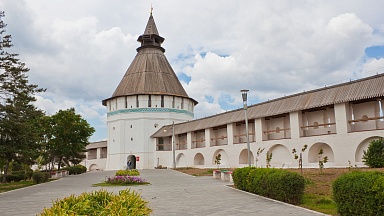A curious side-effect of the Western sanctions policy towards Russia, has allowed Central Asia and, especially, Uzbekistan to actively engage in the formation of new transport corridors, creating interesting logistics combinations in greater Eurasia.
Russia, forced to abandon traditional routes, together with friendlier partners from Uzbekistan, Kyrgyzstan, Kazakhstan, Turkmenistan, Pakistan and India, are discussing building new transport hubs and chains that would allow for the efficient movement of goods from the north to the south and back again. In this context, Uzbekistan, located in the very heart of Central Asia, is beginning to evolve as the main player.
According to Bakhtiyor Ergashev, a director of the Ma’No Centre for Research Initiatives in Tashkent, when Russia decided to make a Pivot to Asia as a result Western sanctions and access to ports in Europe being cut, Uzbekistan, Turkmenistan, and Kazakhstan, realised they had significant opportunities to implement and strengthen their transit and transport potential within the framework of various projects.
Ergashev stated that «The transit and transport potential of Uzbekistan, Kazakhstan and Turkmenistan can be realized through projects on transport and communication interconnection with the Asian territories of Russia, east of the Urals. »
All the projects that are proposed today complement each other. The Trans-Afghan railway corridor from Mazar-i-Sharif through Kabul to Pakistan with access to the port of Gwadar is part of a large project the Trans-Eurasian North-South Corridor. The main thing is to ensure cargo flows both from north to south and from east to west throughout the large Eurasian space, creating land alternatives for sea transport.
«Kyrgyzstan is becoming one of the main routes for parallel imports to Russia, primarily from China. Subject to sanctions, goods from Kyrgyzstan transited through Kazakhstan, but because Astana has agreed to comply with the West’s sanctions, certain problems and delays have now arisen. To deal with this, Kyrgyzstan, and Russia are looking for workarounds. This route is one of the options for such a workaround.»
The contours of this corridor, Ergashev added, are just beginning to emerge: the flow of goods is still very small. However, this route can provide capacity if developed while there are sanctions between Russia and the EU, and while Kazakhstan is trying to comply with the EU’s requirements. The West hasn’t just tried to cut Russia off from Western markets, it is trying to cut it off from Eastern ones too.
As he noted, Uzbekistan must consider another problem — the difficulties of transiting goods through Kazakhstan to Russia and back.
«There are certain issues that relate to sanctioned products. It is clear that both Uzbekistan and other countries of Central Asia, which transport goods in transit through Kazakhstan to Russia, are forced to look for some alternative routes and corridors for the future. This is especially true if the sanctions spiral tightens more, and Kazakhstan participates in compliance. Then the Kyrgyzstan-Uzbekistan-Turkmenistan-Caspian Sea corridor to Russia is the only possible option. However, if Astana stops strictly complying with the sanctions requirements, this would be the most ideal option. Then there will be no need to look for any alternative routes.»


